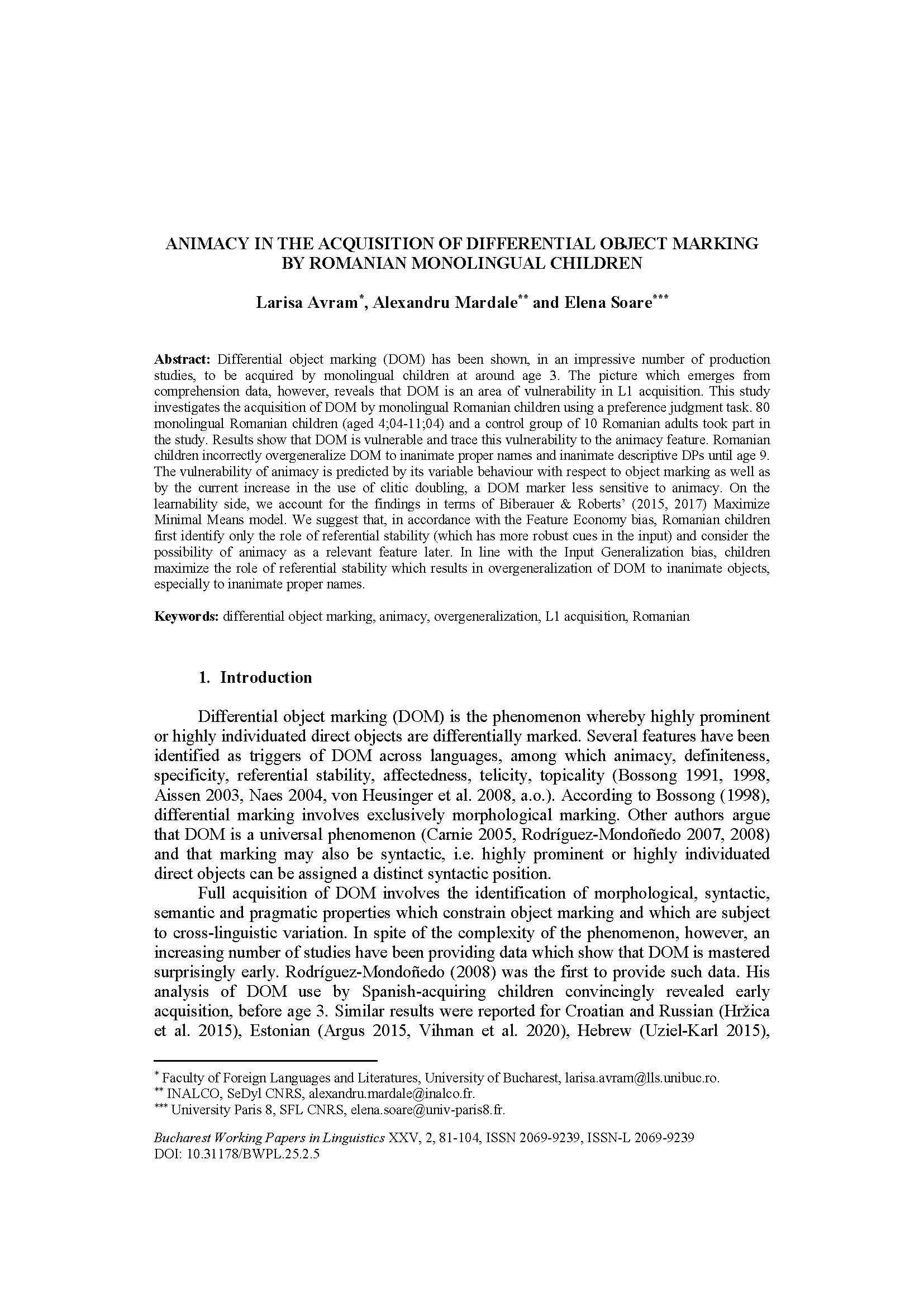ANIMACY IN THE ACQUISITION OF DIFFERENTIAL OBJECT MARKING BY ROMANIAN MONOLINGUAL CHILDREN
DOI:
https://doi.org/10.31178/BWPL.25.2.5Cuvinte cheie:
differential object marking, animacy, overgeneralization, L1 acquisition, RomanianRezumat
Differential object marking (DOM) has been shown, in an impressive number of production studies, to be acquired by monolingual children at around age 3. The picture which emerges from comprehension data, however, reveals that DOM is an area of vulnerability in L1 acquisition. This study investigates the acquisition of DOM by monolingual Romanian children using a preference judgment task. 80 monolingual Romanian children (aged 4;04-11;04) and a control group of 10 Romanian adults took part in the study. Results show that DOM is vulnerable and trace this vulnerability to the animacy feature. Romanian children incorrectly overgeneralize DOM to inanimate proper names and inanimate descriptive DPs until age 9. The vulnerability of animacy is predicted by its variable behaviour with respect to object marking as well as by the current increase in the use of clitic doubling, a DOM marker less sensitive to animacy. On the learnability side, we account for the findings in terms of Biberauer & Roberts’ (2015, 2017) Maximize Minimal Means model. We suggest that, in accordance with the Feature Economy bias, Romanian children first identify only the role of referential stability (which has more robust cues in the input) and consider the possibility of animacy as a relevant feature later. In line with the Input Generalization bias, children maximize the role of referential stability which results in overgeneralization of DOM to inanimate objects, especially to inanimate proper names.




